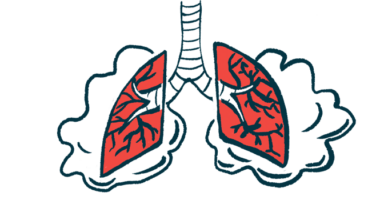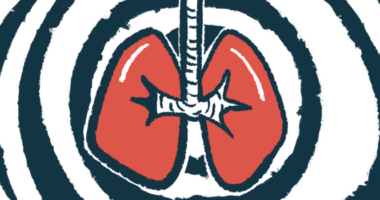Patients with severe CF may benefit most from Trikafta: Real-world data
Trikafta found to boost lung function, nutrition status in CF patients

Trikafta (elexacaftor/tezacaftor/ivacaftor) improves lung function and nutrition status in adults and adolescents with cystic fibrosis (CF), and appears to work particularly well in those with more severe lung disease, according to a real-world study from the U.S.
Researchers also observed that Trikafta appears to work about as well for patients who carry one or two copies of F508del in the CFTR gene, the most common CF-causing mutation.
The study, “Real-life impact of genotype and severity of lung disease on efficacy of elexacaftor-tezacaftor-ivacaftor in people with cystic fibrosis,” was published in Pulmonary Pharmacology & Therapeutics.
In CF, thick mucus builds up in the lungs and clogs the airways of patients, causing shortness of breath and making it more likely to develop respiratory infections. The thick mucus also builds up in the digestive system, preventing the body from taking up nutrients from food, which can lead to difficulty putting on weight.
Data show Trikafta improves lung function, nutrition status
Trikafta, marketed by Vertex Pharmaceuticals, is a CFTR modulator approved in the U.S. for use in patients 2 and older who have at least one copy of F508del or another CF-causing mutation that is responsive to treatment. Both clinical trials and real-world data show Trikafta improves lung function and nutrition status.
However, it is unclear how factors like genetics and the severity of lung disease affect the effectiveness of Trikafta in real-world settings, where “adherence to medications and therapies is much more difficult to control” and “results can be more variable,” the researchers wrote.
To know more, the researchers compared data from 115 patients, median age 23, from before they started Trikafta to one year after starting treatment. More than half (58%) carried two copies of F508del (homozygous) and about one-third (36.8%) carried one copy (heterozygous).
Lung function was defined based on the percent predicted forced expiratory volume in one second (ppFEV1), which measures the maximum amount of air that can be breathed out in one second. Two-thirds (66%) of patients had a ppFEV1 of less than 80%, indicating severe lung disease. These patients were more likely to be older and homozygous for F508del.
One way to assess response to treatment in CF is with a sweat chloride test, which measures the amount of chloride in sweat, high sweat chloride being a feature of CF. Before starting Trikafta, mean sweat chloride was 94.6 mmol/L. After one month of treatment, it dropped significantly to 46.5 mmol/L, showing improvement.
Lung function, BMI improved after one year on Trikafta
Lung function also improved significantly after one year of Trikafta treatment, with the mean ppFEV1 increasing from 67% to 79%. Those with worse lung function before treatment experienced a greater increase than those with better lung function (14% vs. 9%), suggesting that patients with more severe lung disease may benefit the most.
Body mass index (BMI), a measure of body fat that reflects nutritional status, also improved. On average, BMI increased from 22.1 to 23.8 kg per square meter after one year of treatment. Both homozygous and heterozygous patients had similar increases. However, those with worse lung function had a greater increase in BMI (by 2.1 vs. 0.78).
One year of treatment with Trikafta also reduced the proportion of patients who tested positive for Pseudomonas aeruginosa (59% vs. 29%) and methicillin-resistant Staphylococcus aureus (31% vs. 16%), bacteria that can cause severe lung infections. This reduction was particularly evident among those who had worse lung function before treatment.
“These improvements were less impacted by differences in genotypes [homozygous versus heterozygous], but many were impacted by severity of underlying lung disease,” the researchers wrote.
They added: “Limitations of our study include the lack of a control group and data from a single center. … Long-term studies are needed as [Trikafta] appears to be capable of unique improvement in CFTR (F508del related) and future versions may further improve function or burden of care.”









